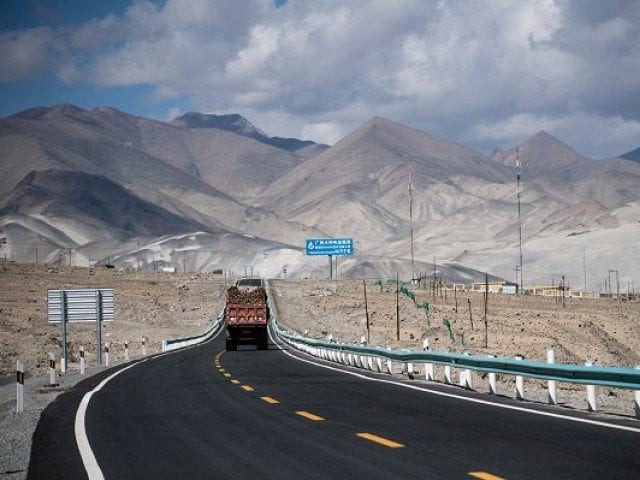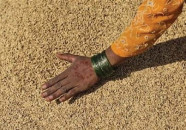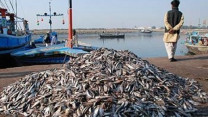CPEC Authority - a potential game changer?
Trade, investment reforms need to be given priority to ensure success

PHOTO: REUTERS/FILE
The aim of the government is to reinitiate the CPEC project and achieve its goal of not only greater economic development in Pakistan but also integrating the national economy into regional and global economies.
The purpose of the CPEC Authority and the new tax laws is to oversee and implement CPEC projects and ensure that Gwadar and its free zone are provided with necessary tax and tariff concessions.
The authority will have considerable autonomy and vast financial and administrative powers. It will ensure that CPEC projects are completed without major bottlenecks that otherwise plague development projects in the country.
However, it is important that the major objective of the authority encompasses an increase in overall exports from Pakistan and improved competitiveness of domestic firms, for which it must be kept insulated from lobbies with a protectionist mindset.
Along with the establishment of the CPEC Authority and tax concessions, the government has also realised the importance of fast-pacing the development of Special Economic Zones (SEZs) and providing incentives for small and medium enterprises (SMEs) to widen the industrial base and ramp up exports.
The cooperation with China is critical for developing the SEZs across Pakistan as China boasts of over 2,500 SEZs, which constitute approximately 50% of all SEZs around the world. The Chinese are likely to aid the development of SEZs in Pakistan.
The World Investment Report 2019 says Pakistan has seven SEZs. They exhibit minimal participation in global value chains. Pakistan is planning an additional 39 SEZs. It is important to improve the existing infrastructure in industrial areas along with developing the new SEZs.
Owing to high trade and production costs that are likely to accumulate as a product moves through the value chain, Pakistan is unlikely to produce products that undergo a transformation in different countries, regionally and globally.
The recently published World Competitiveness Index of the World Economic Forum indicates further deterioration in Pakistan’s ranking, primarily driven by macroeconomic instability. Therefore, it is essential that the Pakistan government not only undertakes significant reforms in its trade costs but also ensures better economic conditions and facilities to boost production in the SEZs as well as by the SMEs.
The World Bank’s World Development Report 2020: Trading for Development in the Age of Global Value Chains emphasises the importance of product fragmentation across country borders or participation in global value chains (GVCs), such that firms within a country specialise in a particular production process rather than manufacturing an entire product. The key message of the report is that a 1% increase in GVCs participation boosts per capita income levels by more than 1%, which is estimated to be twice the benefit from participation in conventional trade.
Furthermore, GVCs enhance sustainable and inclusive development in developing countries if such states adopt trade and investment reforms as well as improve connectivity. Unfortunately, Pakistan has been plagued by the lack of participation in GVCs.
Challenges
The World Bank’s report gives certain examples of challenges faced by the exporters. Pakistan’s exporters have faced significant challenges to receiving concessions on imported intermediates that almost eliminate their ability to buy crucial inputs to boost the quality of their products.
Although the government has made changes to the duty and tax remission schemes, higher constraints on accessing desired inputs can damage export competitiveness. On the other hand, exporters in Bangladesh are granted approval for duty exemptions within 24 hours and more than 90% of their textile exporters avail the scheme.
The report also highlights the fact that Pakistan’s exporters are likely to be the most exposed to automation in production in developed countries, which may eventually result in the displacement of several exporters.
Furthermore, the report highlights the importance of robust national certification and testing agencies to ensure that Pakistan’s products comply with international standards. It cites an example of how the fishing industry was able to overcome the ban on fish exports by improving on services of the testing agency in Pakistan.
Trade linkages
The new phase of CPEC can help boost industrial activity and economic development in Pakistan. It is highly recommended that the CPEC Authority does not limit itself to the promotion of trade and investment between Pakistan and China but also ensures increasing export activities with important destinations in the European Union and the United States.
Although China as a manufacturing hub of the world is known for its exports of finished goods and products, it is also a major exporter and importer of intermediate goods. China is a major origin country for imports for several of the large exporting powerhouses in the Southeast Asian region.
Policies for promoting trade linkages with Chinese firms, which involves increasing exports to other markets, is likely to benefit Pakistan. For instance, an analysis of the data borrowed from the ITC’s Trademap.org shows China is by far the largest exporter of woven fabrics of cotton, manmade filaments, and manmade staple fibers. These inputs can help boost downstream textile production in Pakistan.
Furthermore, with the demand for new machinery and appliances likely to increase with the advent of CPEC-related industrialisation, the imports of such equipment may also get a boost.
China exported more than $1 trillion worth of machinery and electrical appliances in 2018, more than the combined sum of exports of machinery and electrical appliances from Germany, the US, and South Korea. China exported approximately $100 billion worth of data processing machines.
China is also the world’s largest exporter of textile machinery, followed closely by Germany and Japan. China is now the most significant source of textile machinery imports into Pakistan.
Germany and Japan, along with China, were the major sources of textile machinery imports in the previous surge between 2004 and 2007. The relocation of Chinese factories in Pakistan can boost textile exports.
In essence, another potential game-changer is in the making. However, trade and investment reforms need to be prioritised to ensure success.
The writer is the Assistant Professor of Economics and Research Fellow at CBER, IBA
Published in The Express Tribune, October 14th, 2019.
Like Business on Facebook, follow @TribuneBiz on Twitter to stay informed and join in the conversation.



















COMMENTS
Comments are moderated and generally will be posted if they are on-topic and not abusive.
For more information, please see our Comments FAQ